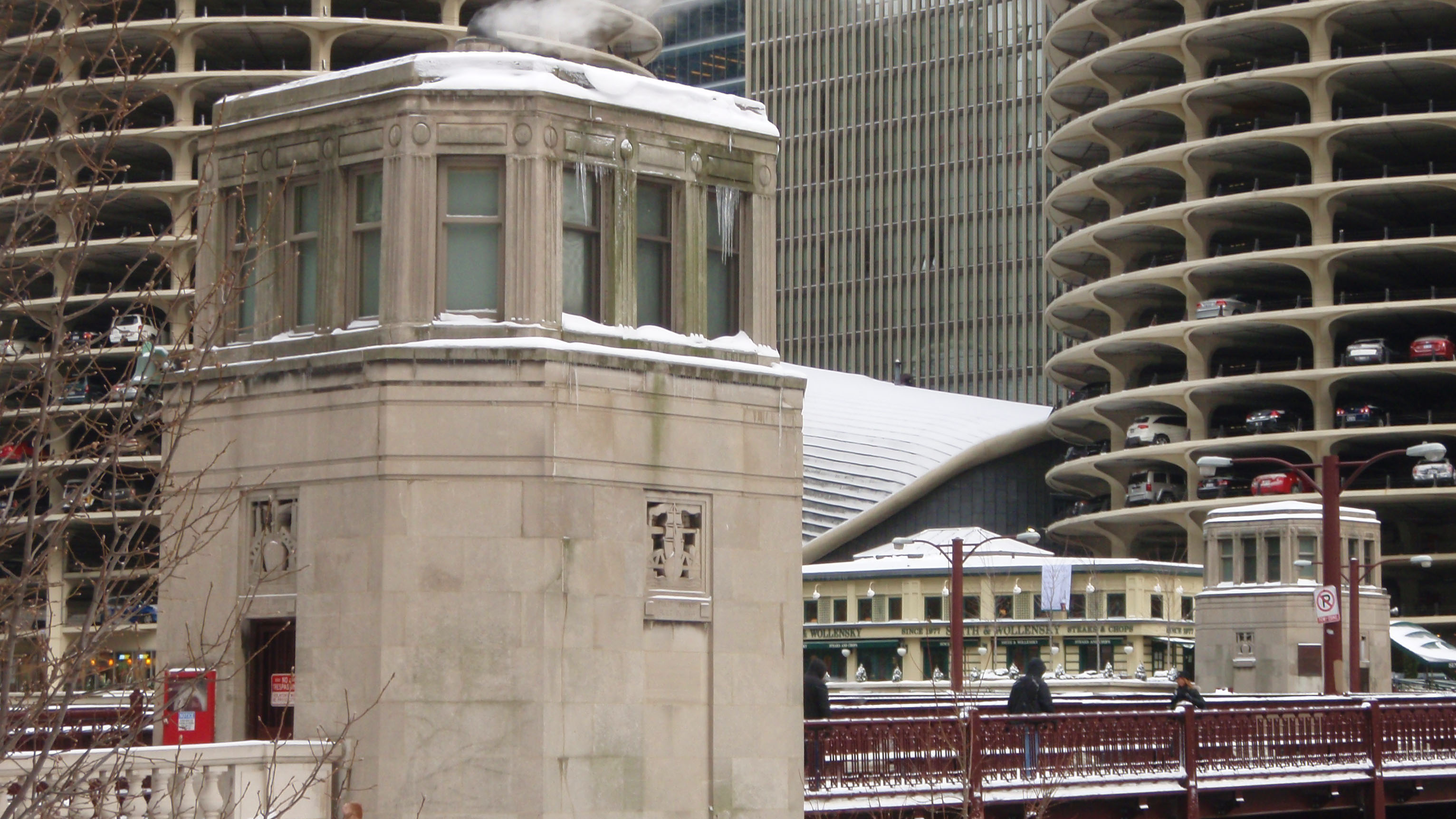
Looking north along the State St. bridge in winter

Looking north along the State St. bridge in winter
The crossing at North State Street is one of the longest continuous crossings (more than 176 years). The first crossing, a ferry, was established in the 1830's. The first bridge, an iron reinforced wooden swing bridge, was built in 1864. The Great Fire of 1871 destroyed the bridge, and a new swing bridge was opened in 1872.
A Scherzer rolling lift bascule bridge was built here in 1903. The 1903 bridge was in service until 1939 when the subway tunnels (Red Line) were started. Construction of the current bridge was delayed by subway construction and material shortages in WW II.
Limestone clad bridge tender houses are on the SE and NW corners of the bridge. This bridge was an AISC award winner when it was built.
The bridge was dedicated as a memorial to those World War II veterans who fought in the Philippines. The dedication states: “To the memory of those gallant heroes, from the Chicago Area who were members of the besieged garrison on the Bataan Peninsula and at Corregidor, Philippine Islands, in World War II. May the courage and fortitude displayed by this group in the face of adversity be a constant inspiration to our citizens.” The official name of this bridge is the “Bataan-Corregidor Memorial Bridge.”
A Chicago Tribune story from 1981 is a reminder of one of the dangers of a movable bridge. It seems that a woman was near the center of the bridge when it was raised. According to the report, she was able to hold on for awhile, but eventually lost her grip and slid down the bridge. Her fall was broken by police who also saved her from going into the water. She broke her leg in the accident. The report states that the bridge tender had activated all alarms and barricades before raising the bridge. It's a good idea to stay alert around the bridges in Chicago – especially when the bridge is making noise and flashing its lights.